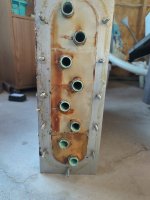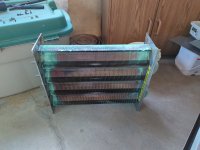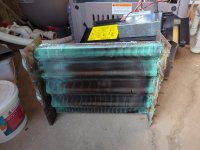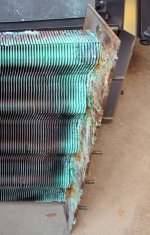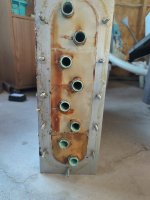- Aug 16, 2022
- 73
- Pool Size
- 22000
- Surface
- Vinyl
- Chlorine
- Salt Water Generator
- SWG Type
- Zodiac LM3-24
Not going to reply previous posts but I have a heat exchanger in a Hayward H250ED2 that is only a year old and showing significant signs of corrosion. I have to replace the flow control valve as it broke and am considering cleaning the internal surfaces of the tubes and wondered if anyone has attempted this. Maybe one of those copper fittings brushes on a long flexible wand? Appreciate any thoughts


